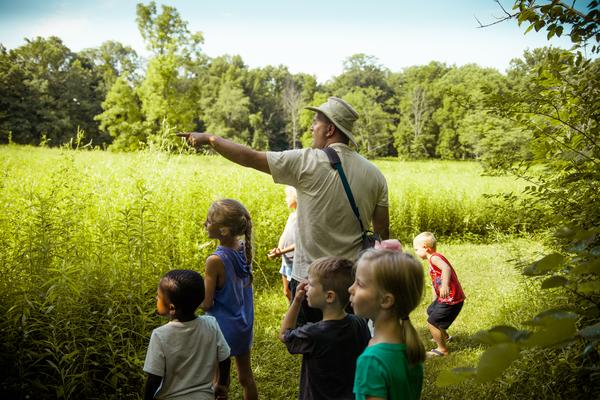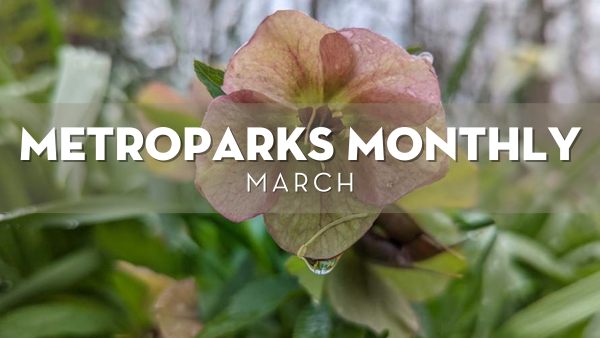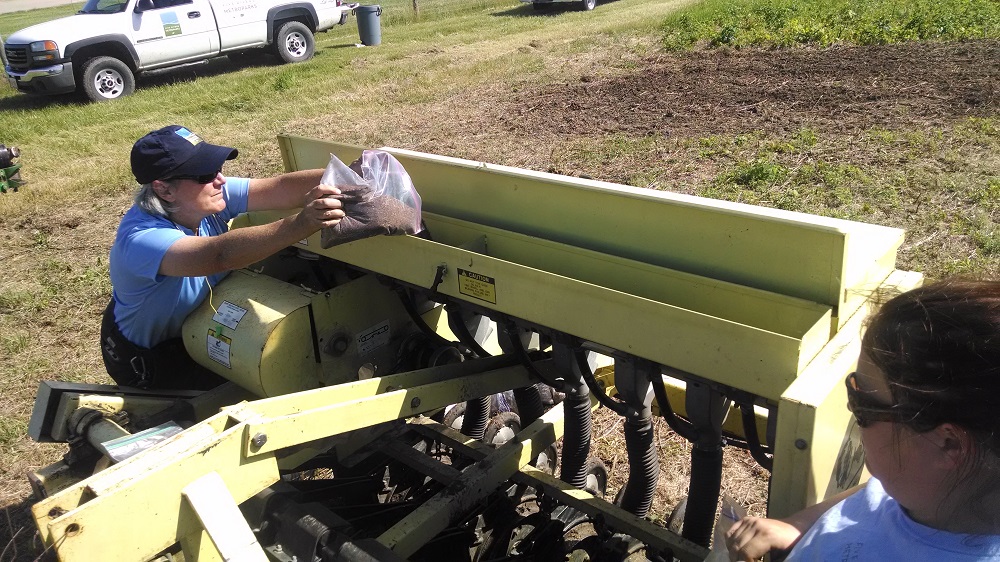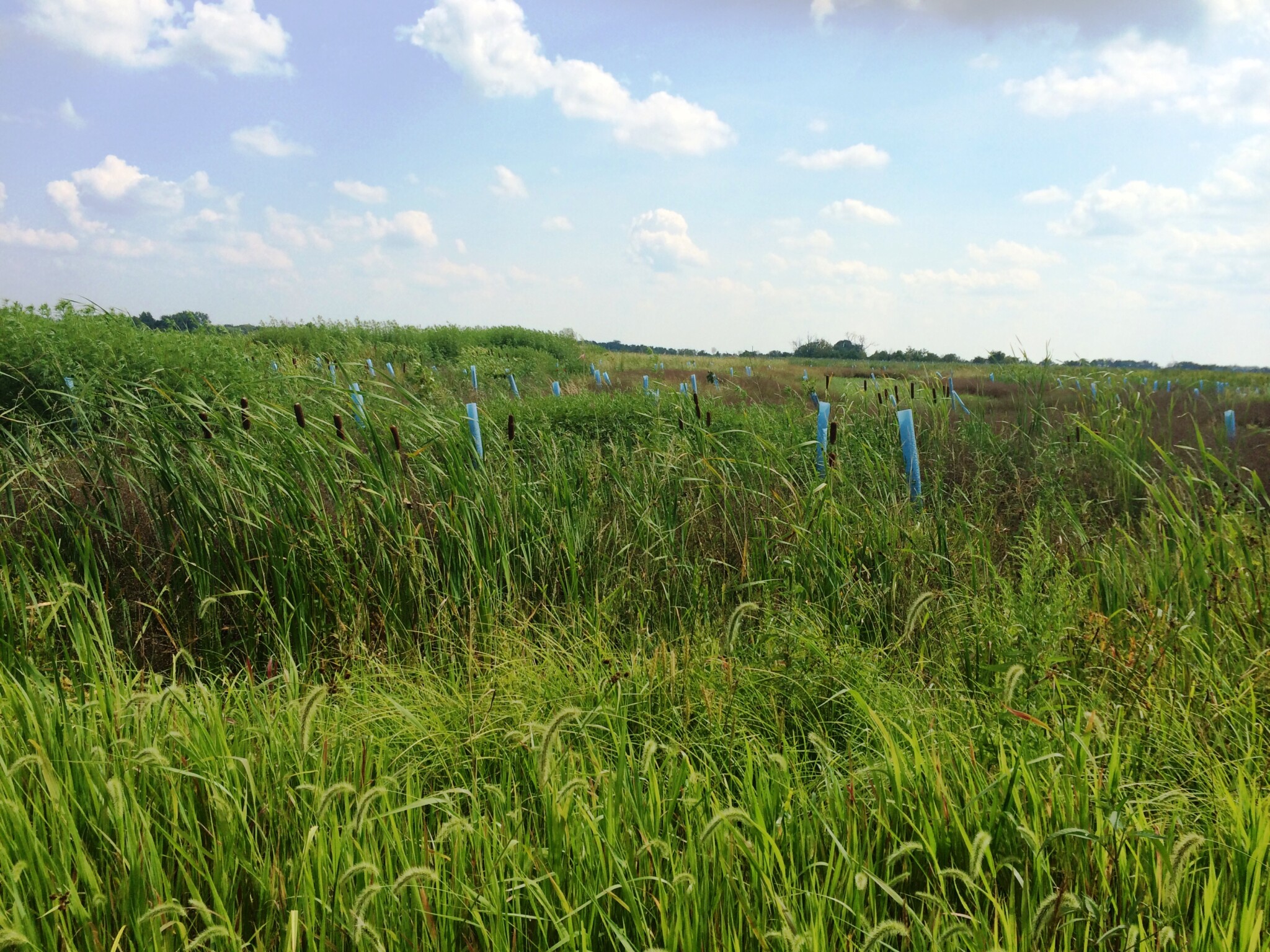Published February 16, 2024
Anyone Can Be a Scientist with Citizen Science

If you’re looking for a fun, easy way to give back to nature and help the environment, participating in citizen science can be the perfect answer. Citizen science is research conducted voluntarily by the public to address real-world problems. These projects can be local or international.
Citizen science allows participants to give back to nature and can show kids that they’re scientists by blending technology and the outdoors. Everyone, including children, observes the world around them every day and can help make changes by contributing information directly to scientists. Without citizen science, researchers would not be able to get the data necessary for widespread pattern collection and analysis and international research.
Five Rivers MetroParks offers monthly Conservation Kids (ages 3-13) and Conservation Leaders (ages 10-17) programs to encourage nature exploration and often include participation in citizen science.
“Kids come to these programs and know things are happening in the world, but they often feel like they are just one person and too young to actually make an impact,” said Erin Rowekamp, MetroParks education specialist. “Citizen science shows them they can contribute to changes at any age.”
There are several upcoming citizen science-based Conservation Kids programs.
MetroParks Pro Tip: Check out the list of sites and apps below that can help you contribute to citizen science projects at home.
Great Backyard Bird Count
Saturday, Feb. 17 – 10 to 11:30 a.m.
Germantown MetroPark – Twin Valley Welcome Center
Like a canary in a goldmine, birds are indicators of change in the health of our local habitats. Join the nation and be part of the annual Great Backyard Bird Count while learning the important roles birds play in our environment.
Youth Scientist Exploration – iNaturalist
Saturday, Feb. 24 – 4 to 5:30 p.m.
Carriage Hill MetroPark – Redwing Shelter
Have you ever been hiking through the woods and wanted to identify a flower, insect or other natural item? Explore the iNaturalist app and learn how your curiosity can help researchers.
Unraveling Plant’s Changing Stories – Project Budburst
Saturday, March 9 – 1:30 to 3 p.m.
Englewood MetroPark – Patty Shelter
Join a national network of citizen scientists responsible for keeping track of the timing of plant growth, from leafing to fruiting. We will venture out and collect data, then submit it to Project Budburst.
Spring Frog Survey
Saturday, April 20 – 8 to 9:30 p.m.
Germantown MetroPark – Sunfish Shelter
Help MetroParks conduct an acoustic frog survey to determine the types of frogs and toads that call this park home.
Bullfrog Round-Up
Saturday, April 26 – 8 to 10 p.m.
Germantown MetroPark – Sunfish Shelter
Take part in conservation efforts by removing bullfrogs from natural pools that have delicate species like wood frogs and red-spotted newts.
To see a full list of Conservation Kids programs, visit metroparks.org/programs. Citizen science-based programs are marked with a blue triangle.
National Citizen Science Projects
While MetroParks programs are geared towards youth, people of any age can take part in citizen science and can even do research at home. Some national projects to check out include:
Urban Buzz
Cicadas are sensitive to changes in their environment, especially changes in temperature and tree availability. As more people continue to populate the planet and we continue to develop more roads, homes, cities and sidewalks, temperatures in these areas increase. This citizen science project is looking for abnormalities in cicada wings and legs (indicating developmental stress) to measure how cicadas respond to environmental changes associated with urbanization. Learn more about Urban Buzz here.
There will be a big emergence this spring of 13 and 17-year periodic cicadas, which is the perfect time to spot them. Annual cicadas will emerge in the late summer.
Ant Picnic
Researchers are interested in learning about the food preferences of different ant species around the world during different times of the year. This information could lead to important information regarding what ants need to survive in their environments and even how climate change could impact ant populations. Learn more about Ant Picnic here.
Audubon Hummingbirds at Home
Anyone can participate in this citizen science project by the National Audubon Society aimed at learning more about hummingbird feeding habits and how climate change is impacting their choice of nectar plants because of changing bloom times. Learn more about Hummingbirds at Home here.
Bee Spotter
Researchers are trying to better understand the population status of bee species in the Midwestern states of Illinois, Missouri, Indiana and Ohio. To contribute to this citizen science project, all you need to do is take pictures of bees you see and upload them to their website. Learn more about Bee Spotter here.
Celebrate Urban Birds
Celebrate Urban Birds is a citizen science project focused on better understanding the value of green spaces for birds. To participate, you only need to watch birds for 10 minutes in a 50 by 50-foot area. Learn more about Celebrate Urban Birds here.
Globe at Night
This international citizen science project looks at how many stars are visible to determine the amount of light pollution in different areas and the impact of that light pollution. Learn more about Globe at Night here.
Visit an urban MetroPark, like Cox Arboretum, and a rural MetroPark, like Twin Creek, to compare the light pollution.
GLOBE Observer
This is a collection of international citizen science projects sponsored by NASA that are designed to increase knowledge on a variety of Earth systems. The current citizen science projects that exist as part of GLOBE Observer are Clouds, Mosquito Habitats, Land Cover, Trees and Eclipse, a special project for this year. Learn more about GLOBE Observer here.
Lost Ladybug Project
Across North America ladybug species composition is changing. Over the past twenty years native ladybugs that were once very common have become extremely rare. During this same time, ladybugs from other parts of the world have greatly increased. This is happening very quickly, and we don’t know how, why or what impact it will have on ladybug diversity and the role that ladybugs play in keeping plant-feeding insect populations low. You can help researchers try to answer these questions by submitting photos of ladybugs. Learn more about Lost Ladybug Project here.
Nest Watch
Nest Watch is a nationwide nest monitoring program designed to track trends related to the reproductive biology of birds, such as when nesting occurs, the number of eggs laid and hatched and number of hatchlings that survive. This information is then used to study changes that may happen over time due to climate change, habitat degradation and loss, urban expansion, and invasive species. Learn more about Nest Watch here.
This citizen science project is best completed at home or at a park you can visit every day.
Project BudBurst
As spring approaches and nature is full of changes, Project Budburst is a great nationally recognized citizen science project to get involved in. It brings together researchers, educators, community scientists and students to help monitor plant phenology, or the timing of plant life cycle events throughout the year. This data plays an important role in investigating the effect of climate change on plants and animals. Learn more about Project BudBurst here.
SciStarter
This website is a great resource to search for different citizen science opportunities. Visit SciStarter here.
SEEK by iNaturalist
When people enter photos of what they see in nature in the SEEK app, an algorithm helps them identify what they are seeing and their observations can be used by scientists as data for research. Learn more about SEEK by iNaturalist here.
Use this app in your favorite MetroParks or at home to compare the different plants you can find.
Squirrel Mapper
There are a few different ways to contribute to this squirrel-based citizen science project. Enter observations on iNaturalist and classify the color of squirrels in photographs or play the find the squirrel game in photographs to look at how conspicuous squirrels of different colors are in different environments. Learn more about Squirrel Mapper here.
Cox Arboretum MetroPark is the perfect place to spot lots of squirrels for this project.





